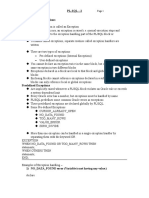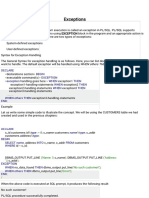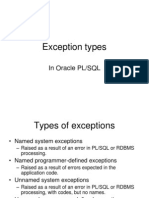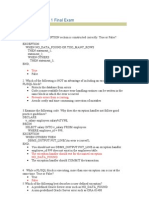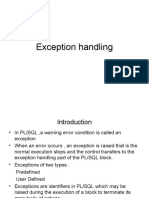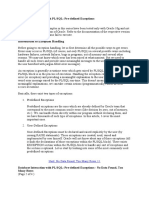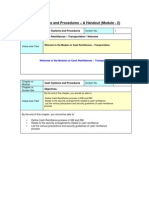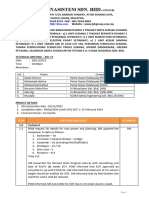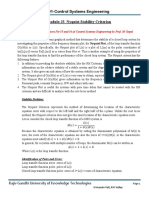0% found this document useful (0 votes)
5 views22 pagesChapter 4 - Exceptions
The document discusses types of exceptions in PL/SQL, including predefined exceptions (such as NO DATA FOUND and TOO MANY ROWS) and user-defined exceptions. It explains how exceptions can be declared, raised, and propagated within PL/SQL blocks, along with examples of handling these exceptions. Additionally, it covers the use of SQLCODE and SQLERRM functions for error handling.
Uploaded by
nadiaCopyright
© © All Rights Reserved
We take content rights seriously. If you suspect this is your content, claim it here.
Available Formats
Download as PDF, TXT or read online on Scribd
0% found this document useful (0 votes)
5 views22 pagesChapter 4 - Exceptions
The document discusses types of exceptions in PL/SQL, including predefined exceptions (such as NO DATA FOUND and TOO MANY ROWS) and user-defined exceptions. It explains how exceptions can be declared, raised, and propagated within PL/SQL blocks, along with examples of handling these exceptions. Additionally, it covers the use of SQLCODE and SQLERRM functions for error handling.
Uploaded by
nadiaCopyright
© © All Rights Reserved
We take content rights seriously. If you suspect this is your content, claim it here.
Available Formats
Download as PDF, TXT or read online on Scribd
/ 22











